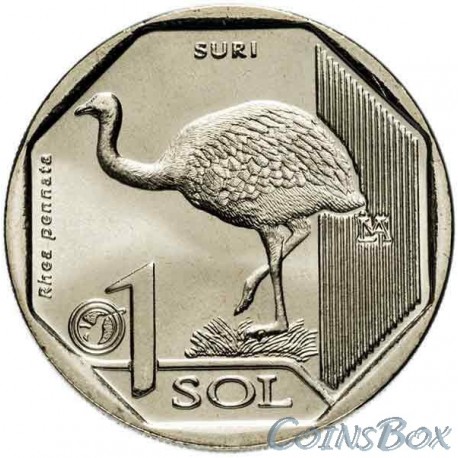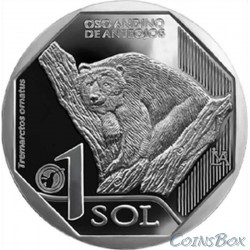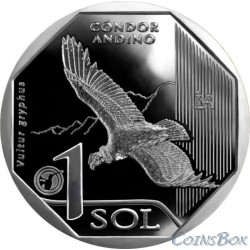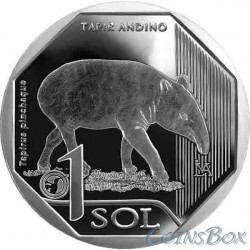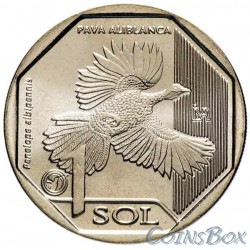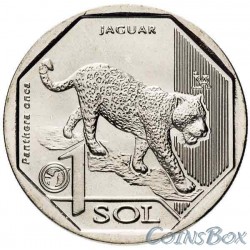Cart
0
Product
Products
(empty)
No products
To be determined
Shipping
0 руб
Total
Product successfully added to your shopping cart
Quantity
Total
There are 0 items in your cart. There is 1 item in your cart.
Total products
Total shipping
To be determined
Total
Peru
- Sets of coins
-
Coins
- Coins Russia and CIS
-
Europe
- EURO
- Austria
- England
- Belgium
- Germany
- Italy
- Spain
- Latvia
- Lithuania
- Estonia
- Luxembourg
- Portugal
- France
- Finland
- Cyprus
- Andorra
- Greece
- Netherlands
- Slovakia
- Slovenia
- Ukraine
- Belarus
- Sweden
- Poland
- Norway
- Denmark
- Ireland
- Iceland
- Switzerland
- Monaco
- Liechtenstein
- Bulgaria
- Hungary
- Moldova
- Romania
- Czech
- Vatican
- Albania
- Bosnia and Herzegovina
- Macedonia
- Malta
- San Marino
- Serbia
- Croatia
- Montenegro
- Turkey
- Kazakhstan
- Transnistria
- Scotland
- Gibraltar
- North America
- South America
- Australia and South Pacific
- Africa
- Asia
- Tokens
- Silver
- Accessories
- Sochi 2014
- Banknotes
- Sale
- Marriages and species
- Sundry
Top sellers
-

-

-

Official set of series Russian Federation. Issue 11
Official set of series "Russian Federation". Issue 11
4 650 руб -

100 RUB Sochi 2014
680 руб -

-

-

10 kopeck 2015 MMD
7 руб -

-

1 Dollar First Patent 2018
250 руб -

Official set of series Russian Federation. Issue 12
Official set of series "Russian Federation". Issue 11
5 350 руб
No supplier
Viewed products
Peru 1 salt 2018 Darwin Nanda - Ostrich
Data sheet
| Depth | 1,92 |
| Weight | 7,32 |
| Diameter (mm) | 25,5 |
| Mintage | 10000 |
| Material | Copper-Nickel |
| Edge of the coin (milling) | fluted |
| Series | Аnimals |
| Country | Peru |
| Release date | 2018 |
| Quality | UNC |
Warning: Last items in stock!
More info
Seventh coin 1 salt of 2018 from the series Fauna Peru - Darwin Nanda (Ostrich)
The Central Reserve Bank of Peru put into circulation a running coin 1 salt Darwin Nanda (Ostrich) from the series “Endangered Wildlife of Peru”
Darwin nandu, or small nandu, or long-billed nandu (lat. Rhea pennata) is a large flightless bird from the nandu family of the order nandoobraznyh. Darwin nandu is the smaller, rarer and less studied of the two types of nandu.
Currently, there is no consensus among ornithologists about the tribal affiliation of a small nandu, some researchers include it along with the common nandu in the genus Rhea, others distinguish it in a separate monotype genus Pterochnemia G. R. Gray, 1871.
Darwin's Nanda has gray or gray-brown plumage. With a height of the back of 90 cm, it is smaller than ordinary Rhea (Rhea americana). Its weight ranges from 15 to 25 kg. He also differs from the big nando in white spots on the plumage of his back. In males, they are more pronounced than in females, and in young birds are completely absent.
There are two geographically isolated fragments of the Nanda range. The larger of them covers the south of Argentina - Patagonia and the southern Andes. The second fragment of the nandu range is located to the north, in the border areas of Bolivia and Chile, in the high Andes.
Despite the fact that the ranges of Darwinian Nanda and Large Nanda intersect, both species prefer different habitats. Darwin Nanda is found in the steppe area, in which only shrubs grow, and in which its large congener does not inhabit. He also lives on a high plateau in the Andes at an altitude of 3,500 to 4,500 m. In Patagonia, it can be found down to cool temperate zones all the way to the southernmost end of the continent. After the man brought him to Tierra del Fuego in 1936, he settled down there too.
In many ways, Darwin Nandu is no different from a big Nandu. The way of life of both types is very similar. Adapting to the shrubland, Darwin Nanda runs with his head horizontally stretched forward and his wings pressed to his body so that he does not interfere with the vegetation.
Reverse: In the central part of the octagon there is a large flightless bird from the family Nanda of the order nanduiform group - STRAUS NANDU (Darwin Nanda). On the left vertically written scientific name in Latin: "Rhea pennata". In the upper part is engraved the name of the coin in Spanish - “SURI”. In the lower part, in the center, the denomination of the coin is marked “1 SOL” and the logo of the coin program is a hummingbird bird. To the right of the Ostrich image is a geometric design of vertical lines with a mint mark.
Obverse: in the center of the coin is the coat of arms of Peru, surrounded by the words “BANCO CENTRAL DE RESERVA DEL PERÚ” year of issue 2018.
Date of issue: 12/17/2018
The Central Reserve Bank of Peru put into circulation a running coin 1 salt Darwin Nanda (Ostrich) from the series “Endangered Wildlife of Peru”
Darwin nandu, or small nandu, or long-billed nandu (lat. Rhea pennata) is a large flightless bird from the nandu family of the order nandoobraznyh. Darwin nandu is the smaller, rarer and less studied of the two types of nandu.
Currently, there is no consensus among ornithologists about the tribal affiliation of a small nandu, some researchers include it along with the common nandu in the genus Rhea, others distinguish it in a separate monotype genus Pterochnemia G. R. Gray, 1871.
Darwin's Nanda has gray or gray-brown plumage. With a height of the back of 90 cm, it is smaller than ordinary Rhea (Rhea americana). Its weight ranges from 15 to 25 kg. He also differs from the big nando in white spots on the plumage of his back. In males, they are more pronounced than in females, and in young birds are completely absent.
There are two geographically isolated fragments of the Nanda range. The larger of them covers the south of Argentina - Patagonia and the southern Andes. The second fragment of the nandu range is located to the north, in the border areas of Bolivia and Chile, in the high Andes.
Despite the fact that the ranges of Darwinian Nanda and Large Nanda intersect, both species prefer different habitats. Darwin Nanda is found in the steppe area, in which only shrubs grow, and in which its large congener does not inhabit. He also lives on a high plateau in the Andes at an altitude of 3,500 to 4,500 m. In Patagonia, it can be found down to cool temperate zones all the way to the southernmost end of the continent. After the man brought him to Tierra del Fuego in 1936, he settled down there too.
In many ways, Darwin Nandu is no different from a big Nandu. The way of life of both types is very similar. Adapting to the shrubland, Darwin Nanda runs with his head horizontally stretched forward and his wings pressed to his body so that he does not interfere with the vegetation.
Reverse: In the central part of the octagon there is a large flightless bird from the family Nanda of the order nanduiform group - STRAUS NANDU (Darwin Nanda). On the left vertically written scientific name in Latin: "Rhea pennata". In the upper part is engraved the name of the coin in Spanish - “SURI”. In the lower part, in the center, the denomination of the coin is marked “1 SOL” and the logo of the coin program is a hummingbird bird. To the right of the Ostrich image is a geometric design of vertical lines with a mint mark.
Obverse: in the center of the coin is the coat of arms of Peru, surrounded by the words “BANCO CENTRAL DE RESERVA DEL PERÚ” year of issue 2018.
Date of issue: 12/17/2018









